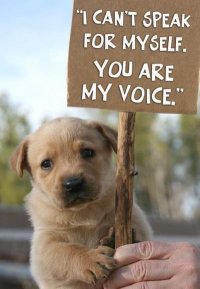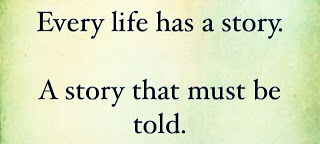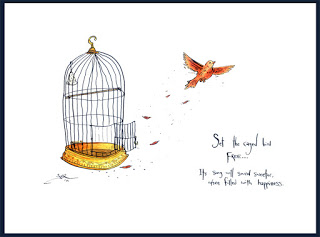===============================================================================================================================================================================================
PROJECT TWO: SAVING ANIMALS THROUGH WRITING
P2: The experiment: extending the sympathetic imagination to a an endangered species
SAVE THE PAPERS IN THIS FOLDER FOR NEXT SEMESTER OR -100
NAME
FOR P3 CONCENTRATE ON
_________: (part one), up to 30 points: a monologue from the point of view of the animal (at least seven-hundred words)
REQUIREMENT: YOU MUST INCLUDE THE ANIMAL'S POINT OF VIEW ABOUT IMPACT OF CLIMATE CRISIS
________: (part two) the science behind the plea to save the species; up to 30 points:
_________ good transition from the animal's point of view to scientific info. Up to 10 points
________ plus points for good writing, detail, insight, etc.
______ points from the three rubric categories designated for P2 (up to 140 points) -3 for each error or infelicity in each of your three P2 rubrics**
_________deductions from other rubric categories**
_______ deductions for missing items from folder and/or missing requirements: an essay in blog format* of at least fourteen-hundred words that must include multimedia (at least one video (put on youtube and supply URL) and three stills of the animal), at least the two required citations, and footnotes Must include the animal's point of view about climate crisis. Must end with accurate word counts both with and without quotations.
WHAT IS DUE: an essay in blog format* of at least fourteen-hundred words that must include multimedia (at least one video and three stills of the animal), at least the two required citations, and endnotes (*footnotes become endnotes). Must include the animal's point of view about climate crisis. Must be acceptable college-level writing. Must end with accurate word counts both with and without quotations.
Online version: AT THE VERY TOP OF THE FIRST PAGE MUST APPEAR IN LARGE TYPE THE THREE RUBRICS ASSIGNED BY THE INSTRUCTOR FOR IMPROVEMENT IN P2,




Why this assignment? It focuses on a current topic and strengthens the foundation of ethics, the sympathetic imagination, which enhances in turn enhances the ultimate ethical virtue, compassion.
NEWS STORIES ABOUT orignal version of this ASSIGNMENT
===================================================================
P2 consists of two sections
[1] P2A THE EXPERIMENT: TRYING TO EXTEND SYMPATHETIC IMAGINATION TO ANOTHER BEING ENDANGERED BY THE CLIMATE CRISIS [at least 700 WORDS ] [example of a P1 that moved in this direction]
Two other examples cited briefly by instructor on Youtube: https://youtu.be/4vuIYHzv16s
[2]P2B: the science behind the claim that the climate crisis threatens the survival of this species [at least 700 WORDS ]
>===================================================================
P2B FINAL VERSION
WHAT SHOULD BE IN THE FOLDER TO BE HANDED IN?
[1] YOUR FINAL COPY CLEARLY MARKED AS "FINAL COPY. " and with the three categories for evaluation clearly marked. FORMAT: DOUBLE-SPACED, WITH A TITLE, PAGE NOS., and FOOTNOTES AT THE BOTTOM OF THE PAGES, using the University of Chicago footnote method. [see below] LAST PAGE SHOULD PROVIDE THE WORD COUNT (both with and without quotes) AND THE U.R.L. OF THE BLOG VERSION.
[1A] Part one (at least 700 words from the points of view of the animal)
[1B] A good transition
[1C] Part two: At least seven-hundred more words explaining the science behind the claimed threat to this species
{1D} A space and line across the page in the text when it is closest to 1400 words not counting quotes (below that line you can only earn points; you can not lose them)
_______________________________________________________________________
ALSO IN THIS FOLDER SHOULD BE these and only these related materials
[2] The P1 rubric evaluation form from me and the P1 final essay edited by me, with my marks on the copy or -50
[3] A COPY OF YOUR ORIGINAL DRAFT of P2B, THE ONE YOU UPLOADED TO CANVAS;
[4] ALL CRITIQUES YOUR COLLEAGUES MADE OF YOUR PROJECT, PUT INTO A SINGLE WORD DOCUMENT, WITH THE NAME OF THE REVIEWER and the color code AT THE TOP OF EACH CRITIQUE.
[5] A SECOND DRAFT WITH ALL THE CHANGES YOU MADE IN RESPONSE TO ALL THE CRITIQUES, WITH CHANGES NOW HIGHLIGHTED AND COLOR-CODED TO SHOW WHICH CHANGES WERE MADE IN RESPONSE TO TO WHICH REVIEWER, INCLUDING ANY MADE IN RESPONSE TO THE INSTRUCTOR'S CRITIQUES OF P1.
[5] Your credibility exercise
===========================================================================
WHY DOCUMENTATION?
===========================================================================
DOCUMENTATION NEEDED FOR STUDENT HONOR CODE OF CONDUCT:
Subchapter 11–400. Prohibited Conduct
Sec. 11–401. Conduct Expected of Students
As stated in subsection 11–101(a), the University's expectations for conduct are grounded in the University Code of Conduct and the Student Honor Code. While subchapter 11–400 outlines specific examples of prohibited conduct, the University expects from its students a higher standard of conduct than the minimum needed to avoid discipline.Sec. 11–402. Academic Dishonesty
The dean of students or a faculty member may initiate disciplinary proceedings under subchapter 11–500 against a student accused of academic dishonesty.
"Academic dishonesty" or "scholastic dishonesty" includes, but is not limited to, cheating, plagiarism, collusion, falsifying academic records, misrepresenting facts, and any act designed to give unfair academic advantage to the student (such as, but not limited to, submission of essentially the same written assignment for two es or courses without the prior permission of the instructor), or the attempt to commit such an act.
"Cheating" includes, but is not limited to,
copying from another student's test, paper, project, or other assignment;
failing to comply with instructions given by the person administering a test, project, or other assignment, or given in conjunction with the completion of course requirements;
using or possessing materials that are not authorized by the person giving the test, project, or other assignment, including but not limited to notes, calculators, electronic devices, and specifically designed "crib notes"; the presence of textbooks constitutes a violation only if they have been specifically prohibited by the person administering the test;
providing aid or assistance to or receiving aid or assistance from another student or individual, without authority, in conjunction with a test, project, or other assignment;
discussing or providing information about the contents of a test with another student who will take the test;
capturing or divulging the contents of a test or other assignment when the instructor has not given permission for students to keep or distribute such information;
substituting for another person or permitting another person to substitute for oneself to take a , a test, or any -related assignment;
using, buying, stealing, transporting, soliciting, or coercing another person to obtain answers to or information about an administered test, project, or other assignment;
falsifying research data, laboratory reports, other academic work offered for credit, or work done in conjunction with the completion of course or degree requirements;
taking, keeping, misplacing, or damaging the property of the University, or of another, if the student knows or reasonably should know that an unfair academic advantage would be gained by such conduct; or altering a test paper, project, or other assignment to gain an academic advantage.
"Plagiarism" includes, but is not limited to, the appropriation of, buying, receiving as a gift, or obtaining by any means material that is attributable in whole or in part to another source without any indication of the original source, including words, ideas, illustrations, structure, computer code, and other expression or media, and presenting that material as one's own academic work being offered for credit or in conjunction with a program course or degree requirements.
"Collusion" includes, but is not limited to, unauthorized collaboration with another person in preparing academic assignments offered for credit, and collaboration with another person to commit a violation of any section of the rules on academic dishonesty.
"Misrepresenting facts for academic advantage" to the University or an agent of the University or The University of Texas System includes, but is not limited to, providing false grades or résumés; providing false or misleading information in an effort to receive a postponement or an extension on a test, quiz, or other assignment for the purpose of obtaining an academic or financial benefit for oneself or another individual; and providing false or misleading information in an effort to injure another student academically or financially.
===========================================================================
DOCUMENTATION IS ALSO NEEDED FOR PARTICIPATION IN SCHOLARLY DISCUSSION:
ARE FOOTNOTES REQUIRED? YES. DOCUMENTATION IS REQUIRED: All MEDIA AND QUOTATIONS ARE TO BE FOOTNOTED. "FOOTNOTES" MEAN THEN NOTES APPEAR AT THE BOTTOM OF EACH PAGE NOT AS NOTES AT THE END OF THE DOCUMENT
(UNLESS IT IS A WEB VERSION OF THE DOCUMENT; (If you use WORD, When you save the project as a webpage, the footnotes become endnotes.))
ALL FOOTNOTE NUMBERS SHOULD BE SEQUENTIAL AND NOT REPEATED. Footnote numbers should NOT be put in parentheses, should be set above the line, and follow any punctuation marks except a dash.
The footnotes for the pictures should supply the label or caption of the image and the complete source, that is, if the image is from the internet, the U.R.L., or the full bibliographic information, OR if it is from a book, including the page number. The footnotes for the quotes should indicate clearly who is speaking in the passage and supply the complete source, that is, the URL and date accessed, if from the internet, or the full bibliographic information, if a print source, including the page number.*
WHAT STYLE OF FOOTNOTE IS REQUIRED? THE U OF CHICAGO FOOTNOTE METHOD WITHOUT BIBLIOGRAPHY.
HERE IS THE OFFICIAL SOURCE HERE IS THE ABBREVIATED TURABIAN VERSION
SPECIFICALLY, I WANT THE VERSION WITHOUT BIBLIOGRAPHY: This University of Chicago footnote system requires complete bibliographical information at the bottom of the page. This way there is no need for a list of works cited or a bibliography at the end.
Concerning punctuation of quotes: When you quote within a quote remember to use italics or single quotation marks to set off the actual quotation from the rest of the words ascribed to the speaker.<
*USUALLY, YOU MUST QUOTE AND CITE THE TEXT OF AT LEAST ONE ACTUAL, PRINTED BOOK NOT FOUND IN ANY WAY ON THE INTERNET, nor on our list of required books. IN THAT CASE ESPECIALLY YOU MUST MAKE SURE TO INCLUDE THE PAGE NUMBER OF THE CITATION. IF THE BOOK IS NOT IN OUR LIBRARY, PLEASE EXPLAIN HOW YOU OBTAINED IT.
some examples of sections from the style manual:
14.20Sequencing of note numbers and symbols Notes, whether footnotes or endnotes, should be numbered consecutively, beginning with 1, throughout each article
14.39Footnotes—pros and cons Readers of scholarly printed works usually prefer footnotes for ease of reference. This is especially true where the notes are closely integrated into the text and make interesting reading, or if immediate knowledge of the sources is essential to readers.
13.65Frequent reference to a single source cited in a noteIn a work containing notes, the full citation of a source may be given in a note at first mention, with subsequent citations made parenthetically in the text. This method is especially suited to literary studies that use frequent quotations from a single source. In a study of Much Ado about Nothing, for example, the note would list the edition and include wording such as “Text references are to act, scene, and line of this edition.” A parenthetical reference to act 3, scene 4, lines 46–47, would then appear as in the example below. In references to a work of fiction, page numbers alone may be given.“Ye light o’ love with your heels! then, if your husband have stables enough, you’ll see he shall lack no barns,” says Beatrice (3.4.46–47).
14.14Notes In the system favored by many writers in the humanities, bibliographic citations are provided in notes,...... The notes, whether footnotes or endnotes, are usually numbered and correspond to superscripted note reference numbers in the text ….. In works with no bibliography, full details must be given in a note at first mention of any work cited; subsequent citations need only include a short form. Full citation in a note:]
Newton N. Minow and Craig L. LaMay, Inside the Presidential Debates: Their Improbable Past and Promising Future (Chicago: University of Chicago Press, 2008), 24–25.
CHAPTER IN AN EDITED BOOK When citing a chapter or similar part of an edited book, include the chapter author; the chapter title, in quotation marks; and the editor. Precede the title of the book with in.
Glenn Gould, “Streisand as Schwarzkopf,” in The Glenn Gould Reader, ed. Tim Page (New York: Vintage, 1984), 310
Citations of journals include the volume and issue number and date of publication. The volume number follows the italicized journal title in roman and with no intervening punctuation. A specific page reference is included in the notes; the page range for an article is [ALSO included IF THERE IS NO] bibliography. In the full citation, page numbers are preceded by a colon.
89. Walter Blair, “Americanized Comic Braggarts,” Critical Inquiry 4, no. 2 (1977): 331–32.
HERE ARE SOME EXAMPLES FROM THE CURRENT PROJECTS in E379S:Roger Lancelyn. Green, The Story of Lewis Carroll (New York: Henry Schuman, 1951), 11.
Teri Didjurgis, "Finding Wonderland," Blue Sky Traveler, , accessed November 13, 2016, http://www.blueskytraveler.com/finding-wonderland/#15/51.7487/-1.2531.
[6] Charlie Lovett, "Finding Alice's 'Wonderland' in Oxford," The New York Times, November 13, 2015, , accessed November 13, 2016,http://www.nytimes.com/2015/11/15/travel/alice-in-wonderland-oxford-lewis-carroll.html?_r=2.
[8] Mark J. Davies, "Thomas Randall and Grandpont House - South Oxford," Southoxford.org, August 2014, 1, accessed November 14, 2016,http://www.southoxford.org/images/photos/Local_history_section/Grandpont_House_and_Thomas_Randall_by_Mark_Davies_Aug_2014.pdf.
Katja Jylkka, "How Little Girls Are like Serpents, Or, Food and Power in Lewis Carroll's Alice Books," The Carrollian: The Lewis Carroll Journal, no. 26 (2010): , accessed November 14, 2016, http://www.alice-in-wonderland.net/resources/analysis/interpretive-essays/how-little-girls-are-like-serpents-or-food-and-power-in-lewis-carrolls-alice-books/.
PYTHON
[2] Marling, Karal Ann. "Letter from Japan: Kenbei vs. All-American Kawaii at Tokyo Disneyland." American Art 6, no. 2 (1992): 108. http://www.jstor.org/stable/3109095 (Links to an external site.).
BUTTERFLY
[1] Lewis Carroll Society of North America. Stained Glass Window 2. Image, 2010. http://www.lewiscarroll.org/carroll/religion/
[15] Carroll, Lewis. Alice Liddell with sisters. Image, 1859. http://www.hrc.utexas.edu/exhibitions/web/carroll/lc7.html
MILK SNAKE
[i] Migraine Facts. Migraine Research Foundation. https://migraineresearchfoundation.org/about-migraine/migraine-facts/. Accessed November 15, 2016.
DOVE
[3] Lindseth, Jon A., and Alan Tannenbaum. Editors. Alice in a World of Wonderlands: The Translations of Lewis Carroll's Masterpiece. (New Castle, DE: Oak Knoll in Cooperation with the Lewis Carroll Society of North America, 2015) Print. 656.
Tanne, Janice Hopkins. "Humphry Osmond." BMJ : British Medical Journal 328.7441 (2004):
713. Print.
_______________________________________________________________________
Some animal possibilities for P2:
- Orange-spotted filefish (Oxymonacanthus longirostris). The filefish dwells in coral reef habitats, on which it is totally dependent, and which themselves are declining in part due to climate change. In addition, the orange-spotted filefish is highly sensitive to warm water: The animal went extinct in Japan during an episode of warmer ocean temperatures in 1988.
- • Quiver tree (Aloe dichotoma). This succulent tree is endemic to (and emblematic of) the arid west of South Africa and Namibia. Chapter Four of the fifth IPCC report "shows, for the first time, that the rate of climate change can be just as important for species survival as the magnitude, and that trees are the most vulnerable to rapid change," Scholes said. A well-studied species, the quiver tree is unable to grow and disperse quickly enough to keep up with a fast-changing climate. (Related: "Rain Forest Plants Race to Outrun Global Warming.")
- • Polar bear. The large predator's story is well known: The Arctic sea ice on which the animals hunt is progressively disappearing during the summer. Sea ice is forming later in the fall and disappearing earlier in the spring. "As the Arctic sea ice retreats, polar bears have to exploit alternative food sources, such as on land," the scientists said, and some hungry polar bears have turned to goose eggs. But it's not the best alternative, Steven Amstrup, chief scientist for Polar Bears International, noted in a previous story. "Some media reports have suggested that this might mean polar bears could just come ashore and eat terrestrial foods and somehow do fine without the sea ice," Amstrup said. "We have absolutely no evidence that they have the ability to do this." (Read "On Thin Ice" in National Geographic magazine.)
- • Adélie penguin. These Antarctic birds mostly live on tiny crustaceans called krill. Krill live on the undersides of ice sheets, where they find refuge and algae as food. But as Antarctic sea ice retreats, krill populations are falling—meaning that the penguins have to migrate farther to find food. Spending a lot more energy to find food makes penguins less successful at breeding and raising young, the scientists said.
- • North Atlantic cod. Overfishing has historically caused numbers of this fish to plunge, but its populations usually bounce back. Not so off the northeastern coast of North America, where populations have not recovered since crashing in the 1990s. "The entire ecosystem seems to have changed," the scientists said, and "this may involve a climate influence due to changing ocean currents and the influx of cold Arctic waters." (Read more about overfishing's impact on New England cod.)
- • Acropora cervicornis and coral worldwide. This reef-building animal "is in decline almost everywhere, for a combination of reasons," said Pörtner, including warming waters—coral are sensitive to changes in ocean temperature. Acropora cervicornis, for instance, used to be widespread in the Caribbean but is now restricted to a few small areas, likely due to warming. (Read more about coral and global warming.)
- • EXTINCT: Golden toad (Bufo periglenes). Along with the Monteverde harlequin frog (Atelopus varius), also of Central America, the golden toad is among the very small number of species whose recent extinction has been attributed with medium confidence to climate change, according to Scholes and Pörtner. Last seen in 1989, the golden frog lived in mountaintop cloud forests that have disappeared due to drought and other climatic changes. Other confounding factors are involved, such as the deadly chytrid fungus, which has killed off many amphibians worldwide. (See: "Photos: Ten Most Wanted 'Extinct' Amphibians.")
- http://news.nationalgeographic.com/news/2014/03/140331-global-warming-climate-change-ipcc-animals-science-environment/
- =============================================================================================================================================================
- Examples of species that are particularly climate sensitive and could be at risk of significant losses include animals that are adapted to mountain environments, such as the pika; animals that are dependent on sea ice habitats, such as ringed seals and polar bears; and coldwater fish, such as salmon in the Pacific Northwest.[4][5]
-
4] USGCRP (2014). Groffman, P. M., P. Kareiva, S. Carter, N. B. Grimm, J. Lawler, M. Mack, V. Matzek, and H. Tallis, 2014: Ch. 8: Ecosystems, Biodiversity, and Ecosystem Services. Climate Change Impacts in the United States: The Third National Climate Assessment, J. M. Melillo, Terese (T.C.) Richmond, and G. W. Yohe, Eds., U.S. Global Change Research Program, 200-201.
[5] USGCRP (2009). Global Climate Change Impacts in the United States. "Climate Change Impacts by Sectors: Ecosystems." Karl, T.R., J.M. Melillo, and T.C. Peterson (eds.). United States Global Change Research Program. Cambridge University Press, New York, NY, USA.
- =============================================================================================================================================================
red knot [ bird ]; desert tortoise; bobcat ; sea stars; caribou ; sage grouse ;
all discussed at http://www.nature.org/ourinitiatives/regions/northamerica/climate-change-impacts.xml
right whale, etc. discussed at
http://kanat.jsc.vsc.edu/student/swift/mainpage.htm
Grey-headed Robin, Lemuroid Ringtail Possum discussed at
https://en.wikipedia.org/wiki/Effects_of_climate_change_on_terrestrial_animals
artic birds and walrus, herring, snowy owls, skuas, weasels and ermine. reindeer, discussed at
http://www.greenfacts.org/en/arctic-climate-change/l-2/5-arctic-animals.htm
=============================================================================================================================================================